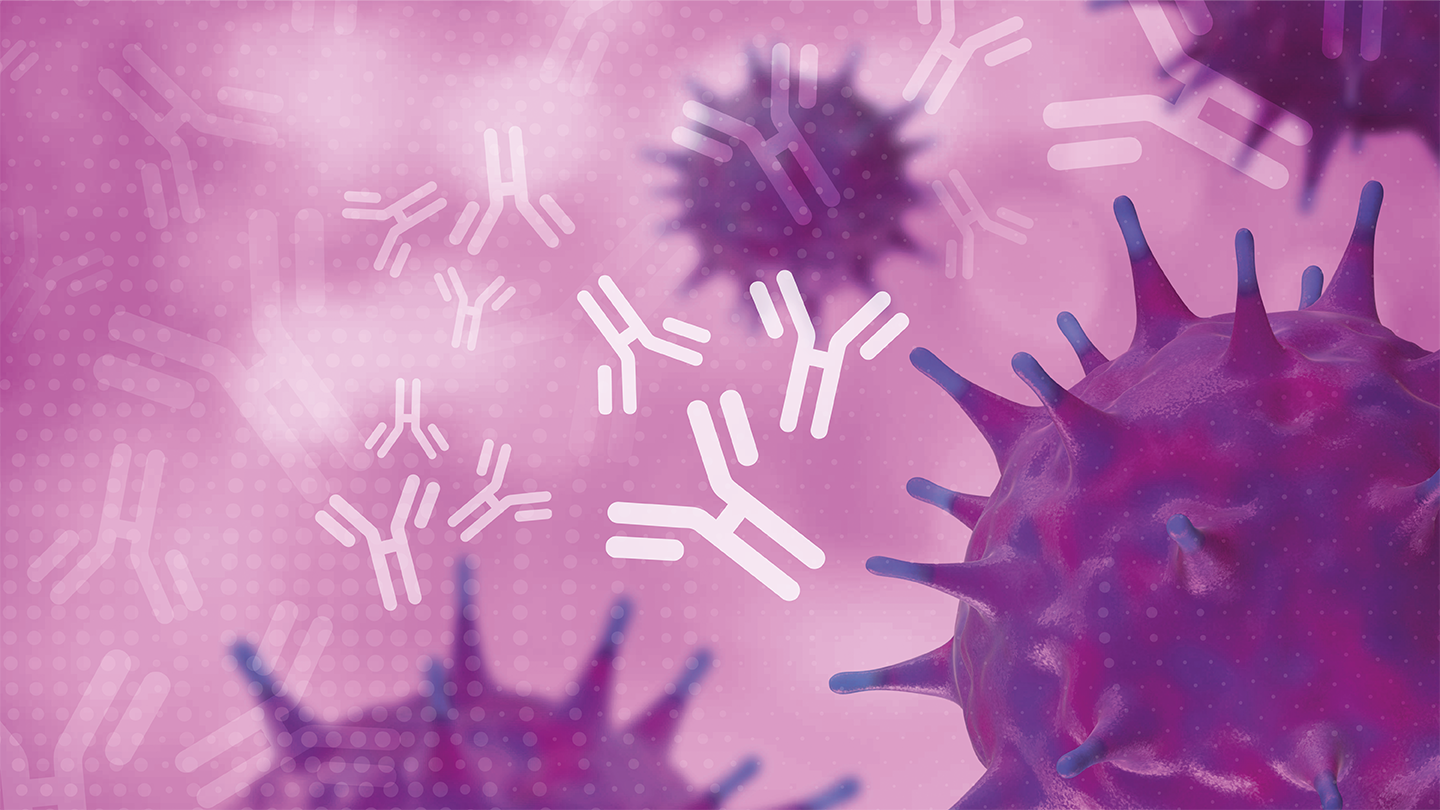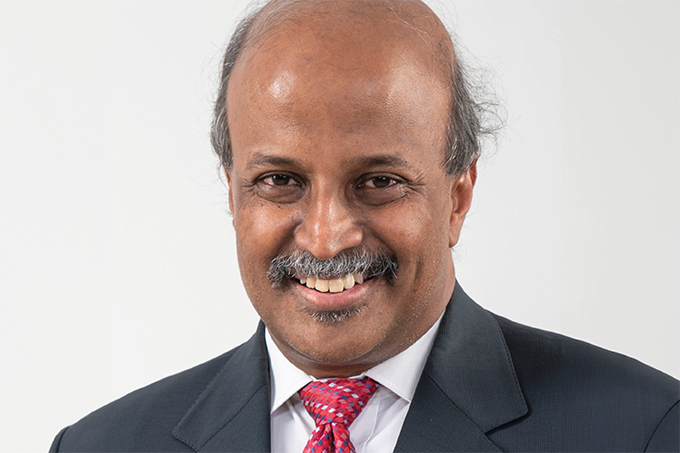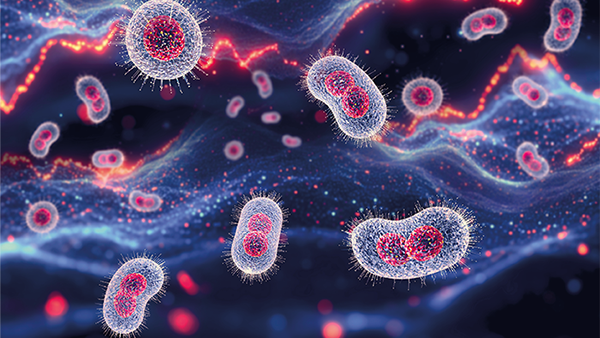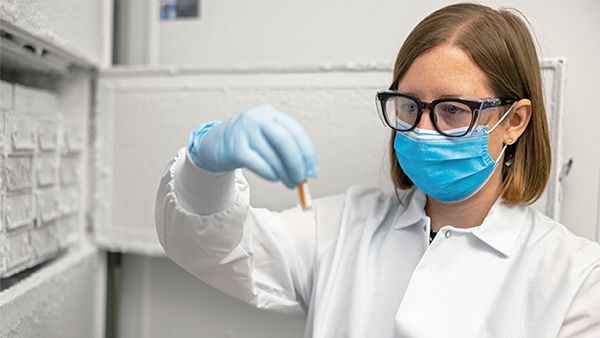Training Tales with Wesley D. Herrera
Wesley Herrera talks about his training journey to the lab, community outreach, and how a medical laboratory science degree prepares you for life in the lab
The following interview has been edited for readability. Watch the full, unabridged interview video above.
Could you please introduce yourself?
My name is Wesley Herrera. I have two degrees from Texas State University – the first was in microbiology, and I’ve just graduated with my Clinical Laboratory Science (CLS) degree. I have a job lined up in the Houston area. I have a lot of research experience and like working in small labs as well.
What drew you to clinical microbiology?
When I was coming to college, I wanted to become a medical oncologist or a cancer doctor, but in my sophomore year of my first major, I was taking a regular microbiology class and we had started identifying unknown bacterial organisms – whether that was looking under the microscope to see what the morphology was or following a flowchart to see if it grows like this, do this, or if it grows like that, do that. I fell in love with it because it allowed me to be an investigator – and that was something I always liked about the class.
After that class, I actually researched how to become a clinical microbiologist and what the requirements were. From that, I figured out that I needed to have a CLS degree and a certification with it to become a clinical microbiologist. Once I learned about that and researched where CLS programs were offered, I realized that Texas State had one; about two years later, I applied and got in.
What’s been your favorite part of your training journey so far?
For rotations we would have to go anywhere, whether that was San Antonio which is an hour away from San Marcos, or Austin which is about 30 minutes away – or anywhere in between. I liked seeing how the different labs operate and how some labs are busier than others. You get to find out about where you like working; for example, whether you like working in a small, medium, or large laboratory.
And your least favorite?
My least favorite would have to be the commute! If I was going to San Antonio, for example, I’d have to wake up super early because some hospitals might want me in at 6:45 am… And even going to Austin, which should be a 30 minute drive, could take two hours if I didn’t leave at the correct time on a Monday morning.
My least favorite was also trying to time-manage everything because not only are you a student on rotation for eight hours a day, you also have to come home and work. Trying to find that balance between the two was always a difficult part of rotations.
What advice do you have for students applying for their clinical placements?
When applying – or even when you’re doing clinical rotations – always ask questions, because it can benefit you later on when you’re applying to jobs. For example, asking questions about a simple technique, the technology they use, how it works, how to clean certain stuff, or how often they run quality control will help you because other labs might use the same automation. Figuring out how it works for one laboratory then transferring it to another gives you a slight advantage because you already know how it works.
Also, be friendly to preceptors because laboratory science is a small field. Everyone knows everyone, so doing well at one rotation will help you in future if you are trying to get a job at a similar location.
Did anything about the lab surprise you when you started your clinical placement?
What surprised me was how busy the lab is. I’ve always pictured what a lab is like, but actually seeing how the lab works and how much testing they do really shocked me. I was scared to go into a laboratory field in case I didn’t like it, but after working in several labs I think I have found my love for it.
You were the Secretary for the Society of Clinical Laboratory Science at Texas State. Tell us about the Society and what it involves…
The Society of Clinical Laboratory Science (SCLS) is based on helping members out or spreading the word about CLS, what the profession is, and what a CLS program does. We’re made up of seniors, juniors, and even pre-CLS students who are interested in applying to the program. We try to spread the word about the program in a variety of ways; for example, we were involved in Bobcat Days – events where we interact with the incoming freshmen. If they are interested in the field, we talk about what we do, what it’s like to be a student here, and try to convert them into CLS; students might do a four-year program in microbiology believing they can work in hospital labs but, in reality, they can’t.
We also try to get involved with the community. We participate in an event called Bobcat Build, where we are sent to a location as volunteers to help out with the community, whether that’s gardening, painting a house, or picking up trash. We also get involved with fundraising; for example, when I was an officer, we did a breakfast taco sale and the money we raised was not only for us to spend, but also to give back to the students in the Society to pay for their drug tests or to help out the people in our field.
What are your post-graduation plans?
I already have a job lined up in Houston, so that’s my major post-graduation plan, but I do plan on going back to school maybe a couple of years down the road. Six years is a lot of schooling, so I’m taking a break, but I eventually plan to go back and maybe get my infectious disease degree or even a medical microbiology degree as well.
I also plan on specializing in microbiology or another department in the laboratory in the meantime, and I plan on being an educator as well.
How does an MLS degree prepare you for the workforce?
For a typical MLS degree, you have to do two years of your basic classes – such as basic biology and basic chemistry, everything that is undergraduate level. In your final two years, you apply to the MLS program and, if you are accepted, your last two years focus on just MLS courses, such as hematology, microchemistry, body fluids, and lab management.
Once you graduate you can sit your certification exam – the American Society of Clinical Pathology Board of Certification exam – and, if you pass, you are then able to start working in the labs. Most labs will want that certification, so once you get it you can work anywhere in the US. I think in New York, California, and Florida you have to go through another process to get licensure, but I believe it’s an extra couple of hours of rotations and you sit a further exam.
Once you get an MLS degree, you can also specialize in any department. You do have to take another exam that says you are specialized for working in a certain area, and you get a couple more letters to your name, but with an MLS degree you can virtually work anywhere – and not just in the lab. You can work as a field service operator, sell instruments to other labs, go into research and design – the degree opens up a wide path for anyone to take.
What’s the most difficult part of applying for postgraduate work?
For me, it was hard. During COVID-19, there were a lot of jobs available, but now we’re going back to how it was before. It is a little hard to apply because most of the labs I went to in the program – and those my friends went to – are all fully stacked. We have to try to connect with the lab manager or director and talk with them to try to get a spot in the lab.
I didn’t apply to any labs where I had placements. Houston is a hard market to break into because not only are you competing with the hospitals who have MLS programs, you are also competing with the smaller community colleges who have other programs, and with people who are moving to Houston. In short, you have to stand out in your application, whether that’s how well you did academically, how you answered the application questions, or even just your personality – you have to stand out to lab managers to get a job right now. It’s a tough market.
In your application, talk about your honors, what you achieved in your two years in the program, any volunteer work you have done, how you excelled in certain areas, and give examples of what you did in certain labs during your rotations.
As someone who has just gone through MLS training, how can the laboratory increase recruitment into the field?
Getting involved with and reaching out to the community is really crucial to increasing the number of people recruited into the field. I never learned what an MLS was in high school; we had guest speakers and career talks but I was never taught what an MLS was, what they do, or that they even existed. Talking to the community through high schools and middle schools and showing what we do in the lab is critical to gaining interest. That’s what we do with the Bobcat Days, and it’s important because we are increasing numbers and interest and spreading the word about our profession to incoming students.
I created a professional Twitter account where I only post MLS content, which helps me connect with people who are high up in the field or in the profession already. Trying to recruit and show what we do in the lab through that Twitter page will also raise awareness and get more people into the field.
What tips would you give to students who are just starting their MLS training?
Ask questions; don’t be afraid to ask for help. Each program has their own cohort, so trying to help each other out is really important because there are a lot of people in the cohort and seeing how everybody studies and memorizes information will benefit you; rather than being stuck in your own ways of learning, you gain other learning techniques from those around you.




